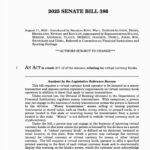EU Accelerates Plans for Digital Euro
The EU is looking to expedite its efforts regarding the digital euro, according to a report by the Financial Times, which cites sources familiar with the situation. The report mentions that public cryptocurrency blockchains such as Ethereum and Solana are even being considered as potential technical foundations for this digital central bank currency. This push stems from concerns regarding the competitiveness of an EU digital currency, particularly in light of the recent stablecoin regulations implemented in the USA.
These regulations are part of the Genius Act, which was passed by the US government under President Donald Trump in July. Among other stipulations, it requires providers wishing to issue dollar-pegged stablecoins to back them with at least 100 percent collateral, including cash, short-term US government bonds, or money market funds. Stablecoins are typically tokens issued across various cryptocurrency networks that maintain a 1:1 peg to an underlying asset such as the US dollar, euro, or other cryptocurrencies.
Historically, stablecoins have mainly served as a US dollar equivalent for cryptocurrency trading; however, they may play a larger role in payment transactions over time. The leading providers in this market are currently Tether and Circle, with the latter also offering a euro stablecoin that boasts a market capitalization of approximately 200 million euros.
As reported by Coinmarketcap, the entire stablecoin ecosystem is presently valued at the equivalent of 245 billion euros, with the majority of these coins pegged to the US dollar. Many market analysts predict a surge in stablecoins. US Treasury Secretary Scott Bessent anticipates that the market could reach a valuation of 3.7 trillion US dollars by 2030. Major American banks, including JPMorgan Chase and Citi, are also planning their stablecoin offerings.
The swift enactment of US legislation has created uncertainty among EU officials, according to the Financial Times. EU officials are concerned that these new US laws could further enhance the already favorable trend for dollar-pegged tokens. Consequently, a digital euro is deemed essential to safeguard the euro’s dominance within the continent, necessitating an acceleration of associated plans. Discussions are increasingly focused on employing a public blockchain, although this approach may encounter data protection challenges within the EU, as blockchain payments are publicly visible and generally offer users protection only through pseudonymous addresses.
Piero Cipollone, a member of the Executive Board of the European Central Bank (ECB), expressed concerns about US stablecoins back in April. He believes the US government’s promotion of dollar-backed stablecoins poses a potential threat to Europe’s financial stability and strategic independence. Cipollone worries that euros could migrate to US platforms, thereby enhancing the dollar’s role in cross-border payments and weakening the euro.
The digital euro is currently in its preparatory phase. For several years, monetary authorities within the eurozone have been working on a digital variant of the European common currency to effectively compete with US providers dominating digital payments. The EU Commission has suggested a legal framework for 2023; however, final legislation is still being developed, and no definitive decision has been reached regarding the potential technical framework, as the ECB informed the Financial Times. Both centralized models and decentralized blockchain technology are under consideration.
Nevertheless, there is considerable criticism surrounding the EU’s digital euro initiatives. Most banks and savings institutions in Germany have voiced skepticism regarding the introduction of a digital euro. They question what additional specific benefits the digital euro would provide compared to existing payment methods like real-time transfers. Moreover, banks are concerned about the potential impact on their deposit business. A study conducted by consulting firm PwC indicates that implementing the digital euro could incur substantial costs. Projections for the entire eurozone suggest that total expenses could range between 18 and 30 billion euros, depending on various scenarios, as banking apps, online banking, payment cards, and terminals would all require adjustments.


















